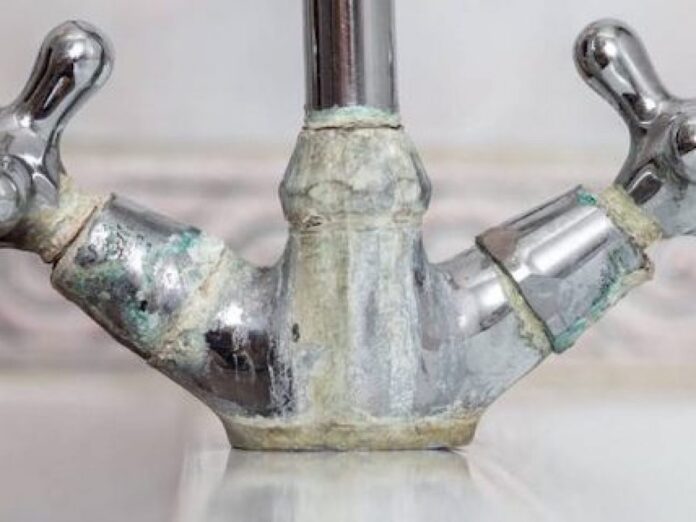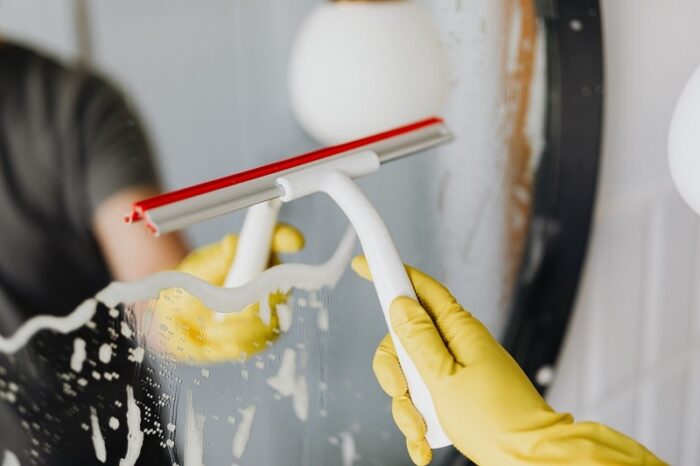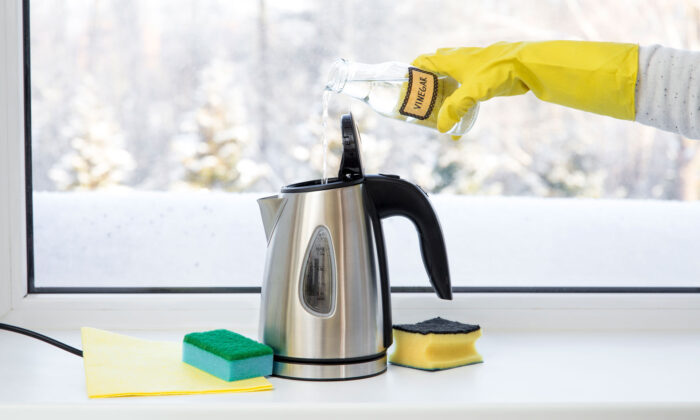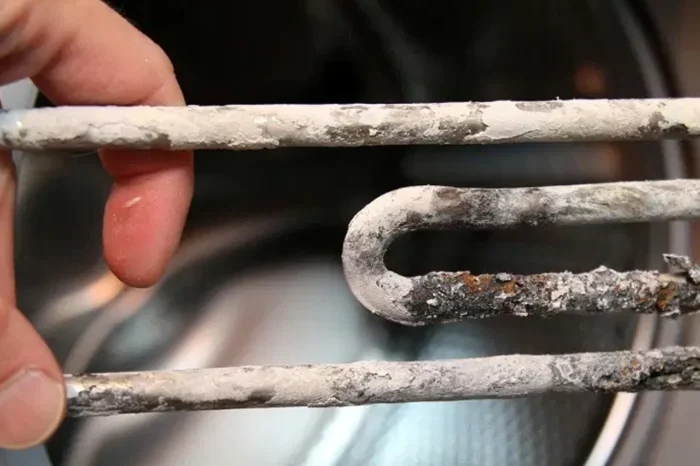
If you have ever noticed a white, crusty substance on your home’s faucets, showerheads, and other plumbing fixtures, it is likely limescale buildup. Limescale is a common problem in homes with hard water.
Hard water is water containing minerals like magnesium and calcium that leave behind stubborn deposits on surfaces and in appliances. Limescale buildup can be unsightly and can cause some serious damage to your plumbing system. The best way to prevent it is by installing one of the many types of water softeners.
In this article, we will discuss what limescale is and how you can tackle this problem at home.
What is limescale?
Limescale is a chalky substance that you often see on appliances and surfaces as a result of hard water. These deposits are mostly made up of calcium carbonate and magnesium carbonate.
Limescale buildup can cause blockages in pipes, contribute to the breakdown of water heaters, and reduce the efficiency of appliances such as dishwashers and washing machines. It can also have an effect on the taste of your drinking water.
Can you remove the limescale on your own?

When it comes to descaling appliances in your home, there are two options available: doing it yourself or hiring a professional.
Descaling appliances involves removing the accumulated mineral buildup that often occurs in hard water regions. Although some homeowners may choose to do this on their own, it is important to keep in mind that descaling can be a complicated and time-consuming process.
Additionally, if done incorrectly, descaling could damage appliances leading to costly repairs. While some appliances like kettles can be cleaned by a homeowner, if the buildup is severe or you can’t do it yourself, it is recommended that you seek professional assistance.
This way, you can be confident that the descaling is done correctly and that your appliances will continue to work properly for years to come.
How to get rid of limescale
If you notice limescale buildup in your home, the best way to remove it is to use a descaler. A descaler is a chemical that dissolves limescale and other mineral deposits. There are many commercial descaling products available in the market, but you can also use some natural descalers such as vinegar, lemon juice, and baking soda.
Simply spray or rub the descaler on the affected surface and let it sit for 15-20 minutes before rinsing it off with water.
Here’s a quick guide on how to DIY limescale removal:
- Boil a kettle of white vinegar and use it to descale your limescale deposits.
- Scrub the limescale with baking soda and an abrasive sponge or cloth.
- Use lemon juice to soften the limescale before attempting to scrub it off.
- Use commercial descaling products, such as CLR, that are designed specifically for removing limescale buildup in appliances and fixtures.
- Purchase a water softening system to reduce the amount of minerals in your water, which can help prevent limescale buildup in the future.
- Clean out shower heads, sinks, and taps regularly with vinegar to keep them from accumulating limescale deposits.
Tackling limescale in appliances

Limescale is a common problem in appliances that use water, such as coffee makers, kettles, and even irons. The best method to tackle limescale buildup in these appliances is to use a descaler specifically meant for appliances.
These descalers are gentle on the appliance and effectively remove limescale. Be sure to follow the instructions provided by the manufacturer while using descalers to prevent any damage to the appliance.
How to prevent limescale buildup
One way to prevent limescale from building up is to clean your plumbing fixtures regularly, at least once a week. Proper cleaning helps prevent the accumulation of minerals on the surface.
This said, the best way to prevent limescale buildup is to install a water softener system. A water softener removes minerals such as calcium and magnesium from the water before it enters your home’s plumbing system.
Hard water (water with excess minerals) can cause numerous issues in your home, such as damage to appliances and the buildup of limescale. Limescale, a hardened mineral deposit, can accumulate in pipes and appliances, causing them to wear down over time.
The water softener replaces these minerals with sodium or potassium ions, resulting in soft, pure water that is much gentler on your appliances and pipework.
Soft water also prevents the buildup of limescale, as it cannot form on surfaces with lower mineral content. Overall, investing in a water softener is a smart way to protect your home’s plumbing system while improving the overall quality of your water. This reduces the amount of limescale that is deposited on surfaces and appliances.

Health concerns
When water passes through pipes with high levels of calcium and magnesium, it leaves behind mineral deposits that form limescale. These deposits can contain harmful bacteria, such as Legionella, which can lead to serious health problems, including Legionnaires’ disease, a type of pneumonia.
In addition to bacteria, limescale can also affect the taste and quality of drinking water. It can also clog plumbing and reduce water pressure, leading to an increased risk of water contamination. Limescale can also damage appliances such as washing machines, dishwashers, and coffee makers, which can lead to costly repairs or replacements.
Conclusion
Limescale is a common problem in homes with hard water. It is unsightly and can cause serious damage to your plumbing system and appliances. Regular cleaning and the use of descalers can help remove limescale buildup.
Preventing limescale buildup through the installation of a water softener and regular cleaning is also important. If you’re facing persistent limescale issues, consider calling a professional plumber for advice and assistance.
















